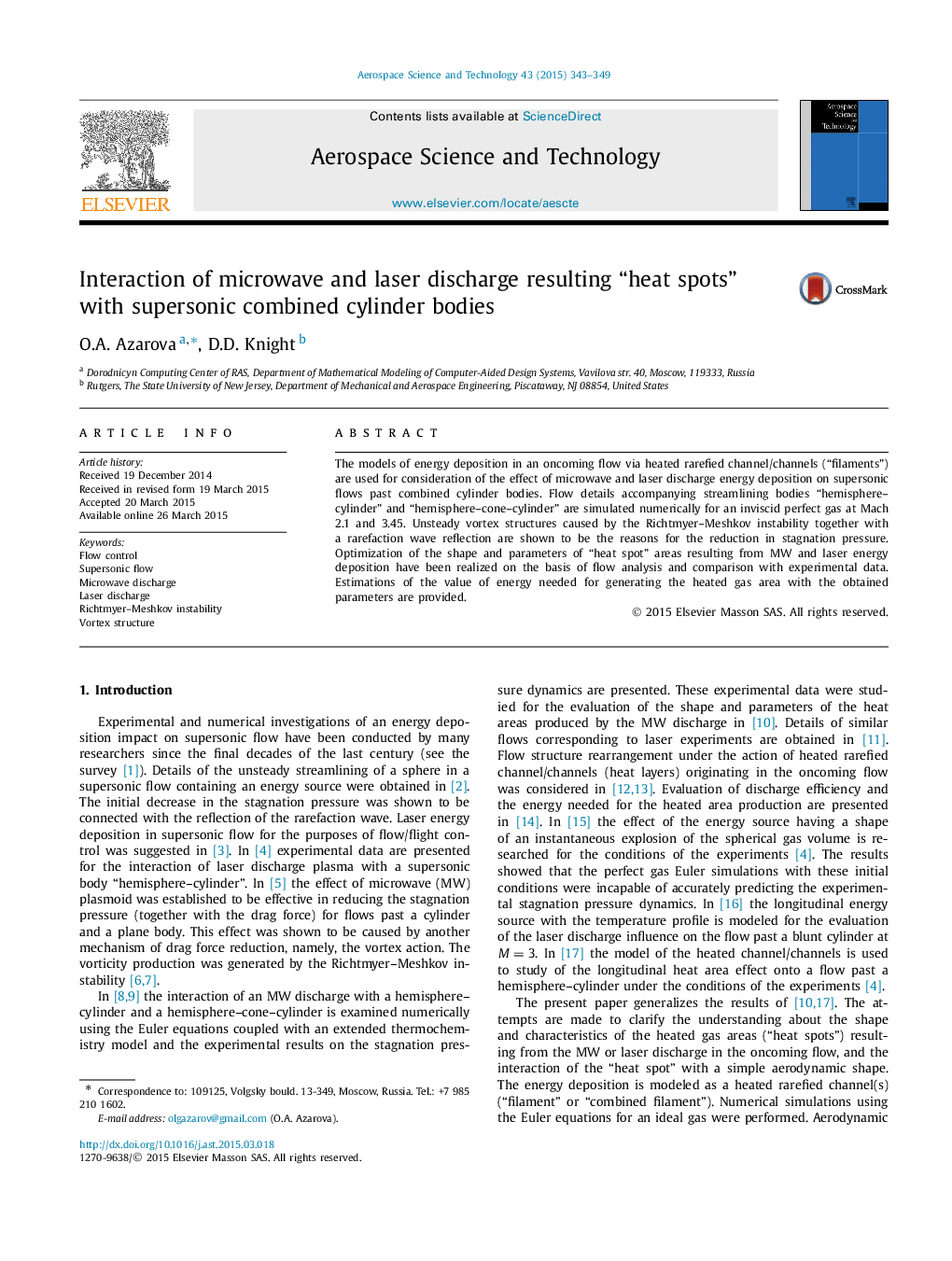| Article ID | Journal | Published Year | Pages | File Type |
|---|---|---|---|---|
| 8058989 | Aerospace Science and Technology | 2015 | 7 Pages |
Abstract
The models of energy deposition in an oncoming flow via heated rarefied channel/channels (“filaments”) are used for consideration of the effect of microwave and laser discharge energy deposition on supersonic flows past combined cylinder bodies. Flow details accompanying streamlining bodies “hemisphere-cylinder” and “hemisphere-cone-cylinder” are simulated numerically for an inviscid perfect gas at Mach 2.1 and 3.45. Unsteady vortex structures caused by the Richtmyer-Meshkov instability together with a rarefaction wave reflection are shown to be the reasons for the reduction in stagnation pressure. Optimization of the shape and parameters of “heat spot” areas resulting from MW and laser energy deposition have been realized on the basis of flow analysis and comparison with experimental data. Estimations of the value of energy needed for generating the heated gas area with the obtained parameters are provided.
Keywords
Related Topics
Physical Sciences and Engineering
Engineering
Aerospace Engineering
Authors
O.A. Azarova, D.D. Knight,
